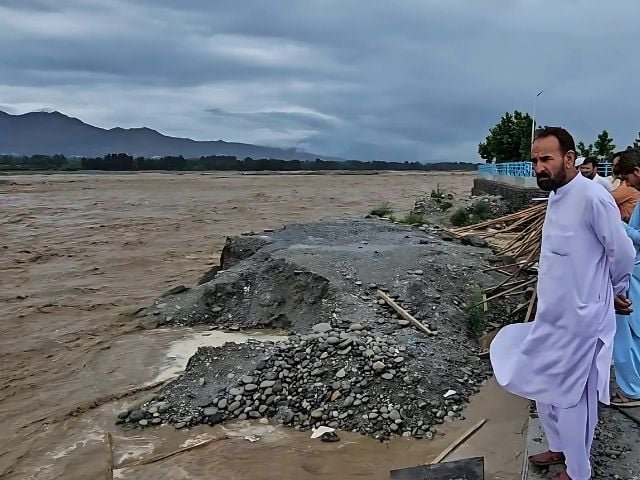Same Rain, Same Ruin: KP’s Monsoon Crisis
Just last month, the picturesque Swat Valley faced another tragic event. Torrential rains led to catastrophic flash floods, sweeping away families, tourists, and even livestock along the Swat River. Videos on social media captured horrifying scenes of people, including children, clinging to small patches of land as the water surged dangerously close. Sadly, by the time rescue operations began—a process often hindered by bureaucratic delays—eleven lives had already been lost, including four children.
Reports from the Provincial Disaster Management Authority (PDMA) indicate not only fatalities but also significant destruction, with 56 houses damaged and numerous areas affected, including Punjab, where 13 additional lives were claimed. Even though the National Disaster Management Authority (NDMA) had issued warnings days in advance, illegal businesses continued to operate near riverbanks, ignoring lessons from past calamities.
The recurrent floods in KP raise an unsettling question: What have the authorities learned from previous disasters? It appears that while some reactive measures have been introduced, proactive strategies for mitigating risks remain alarmingly scarce. After the floods of 2022, which devastated more than 100,000 homes and resulted in nearly 300 deaths, little progress has been made in implementing effective disaster management protocols.
Although some advancements have been made, such as improvements in the early warning systems and public awareness campaigns, these initiatives often lack sustainability due to dependency on temporary funding. The Planning Commission’s recommendations to relocate communities living near hazardous riverbanks have mostly gone unheeded, and the attacks on these vulnerable areas continue.
Part of the problem lies in insufficient investment in infrastructure. Even after reconstruction efforts post-disasters, poorly built bridges and inadequate drainage systems continue to plague the region. While Punjab and Sindh have seen some progress in climate adaptation planning, KP remains dangerously behind.
In remote areas, the lack of reliable warning systems forces locals to rely on traditional knowledge, such as changes in animal behavior and weather patterns. Yet, these communities are often overlooked in favor of high-tech solutions that don’t fit their realities.
The educational sector in KP suffers tremendously from these repeated disasters, with thousands of school buildings damaged and very few repaired or reconstructed. Many children still study in makeshift learning centers, lacking safe and proper facilities. Health services are equally inadequate, with floods leading to outbreaks of diseases like diarrhea and skin infections due to delayed medical responses.
The ongoing inaction is costly—not just in terms of lives lost but also financially, with trillions in damages each year. The cumulative impact of these floods can erode social trust in government, hinder children’s education, and deplete valuable natural resources.
It’s clear: effective, long-term solutions are desperately needed. Policymakers in Peshawar must prioritize comprehensive drainage systems, resilient infrastructure, and robust planning to break this cycle of destruction and help safeguard vulnerable communities.
As a collective, we can advocate for better solutions and stay informed about the ongoing challenges in KP. Engaging with organizations like Pro21st can provide valuable insights into these critical issues. Together, we can work towards meaningful changes for a safer, more resilient future.
At Pro21st, we believe in sharing updates that matter.
Stay connected for more real conversations, fresh insights, and 21st-century perspectives.





